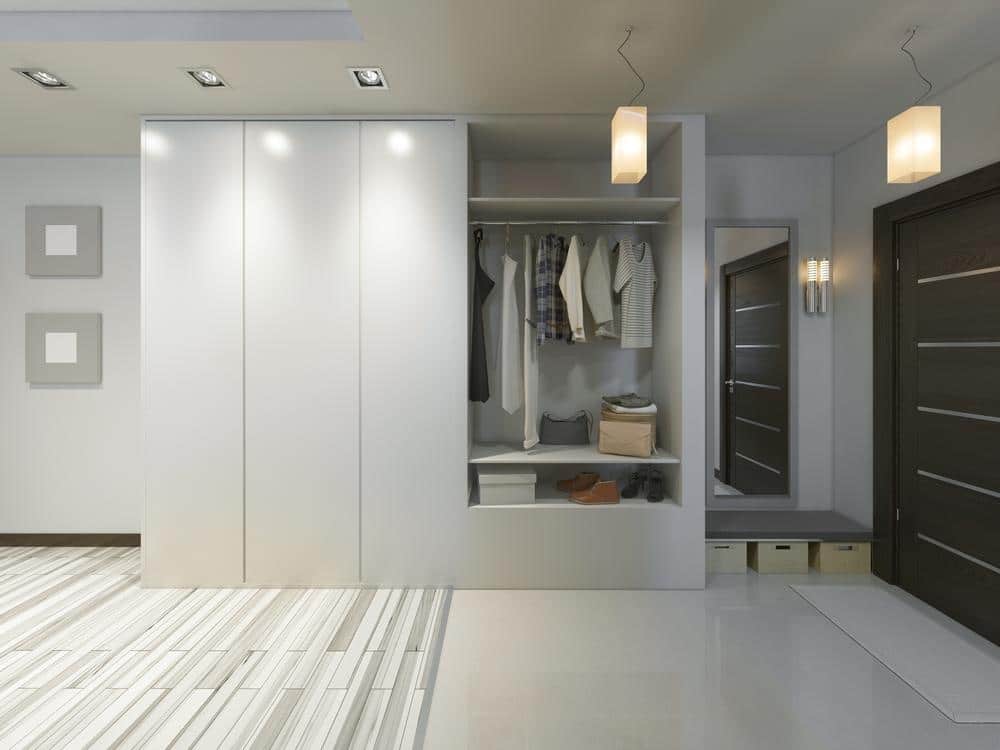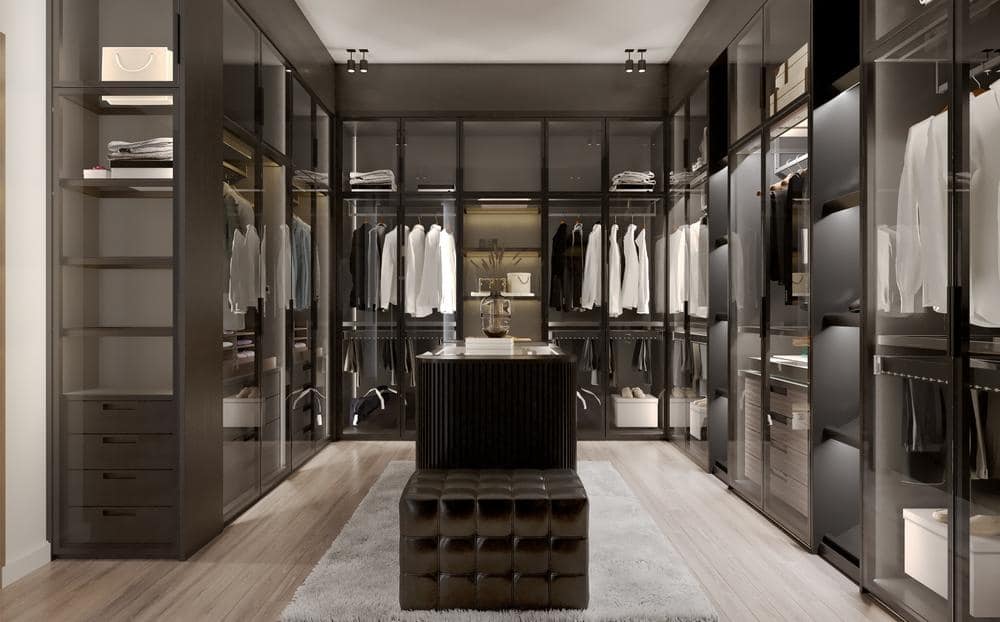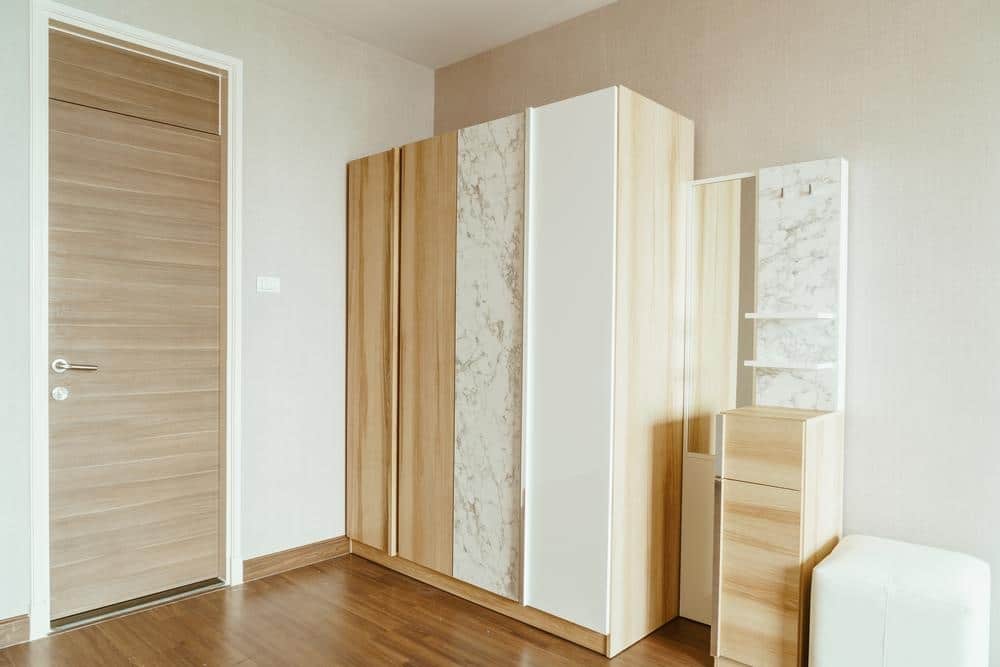The living room is the heart of the home, where families gather to relax, entertain, and spend quality time together. Creating a functional, comfortable, and stylish space is important, but designing the perfect layout can be challenging. Whether you have a small, narrow space or a large open-concept room, here are some inspiring living room layout ideas to transform your space into a cozy haven.

Conversation pit
Table of Contents
- Conversation pit
- L-shaped Sectional
- Dual sitting arrangements
- Symmetrical Seating
- Layered seating
- Living Room Layout Ideas With Tv
- Living Room Layout Ideas With Fireplace
- Living Room Layout Ideas With Tv And Fireplace
- Living Room Layout Ideas With Sectional
- Living Room Layout Ideas Apartment
- Living Room Layout Ideas Rectangular Room
- Living Room Layout Ideas With Corner Fireplace
- Living Room Layout Ideas Open Floor Plan
- Living Room Layout Ideas Small
- Living Room Layout
- Living Room Layout Ideas
- Living Room Setup
- Living Room Set-Up Ideas
- Living Room Arrangement Ideas
- Living Room Setup Ideas
- Ideas For Room Layout
- Living Room Layout Designs
- Living Room Configurations
- Best Living Room Layout
- Sitting Room Layout
- How To Layout A Living Room
- How Do I Space Out My Living Room?
- How Do I Set Up My Living Room Ideas?
- How To Layout Living Room With Tv?
- Is There An App To Help Me Rearrange My Room?
- How Do You Design A Large Living Room Layout?
- How To Design Living Room For Beginners?
- In Which Direction Should A Sofa Be Placed?
- Where Should I Put My Tv In My Living Room?
- How To Efficiently Arrange Furniture In A Small Living Room?
- How Can I Make My Living Room Look Expensive?
- How Do You Style A Simple Living Room?
- How Can I Design My Room Ideas?
- How Should The Furniture Be Arranged In A Living Room?
- What Are The Living Room Layout Design Principles?
- How Do I Set Up A Perfect Living Room?
- What Is The Best Living Room Shape?
- What Is The Best Way To Use Space In A Living Room?
- How To Arrange A Living Room With A Fireplace And Tv?
- How Can I Arrange My Sitting Room?
- How Do You Zone A Large Sitting Room?
- How To Place A Sofa In A Living Room?
- What Are The Components Of A Sitting Room?
- How To Arrange Living Room With Tv?
- Is it OK to put a mirror in a closet?
- Are mirrored closet doors a good idea?
- Is it OK to put a mirror in a closet?
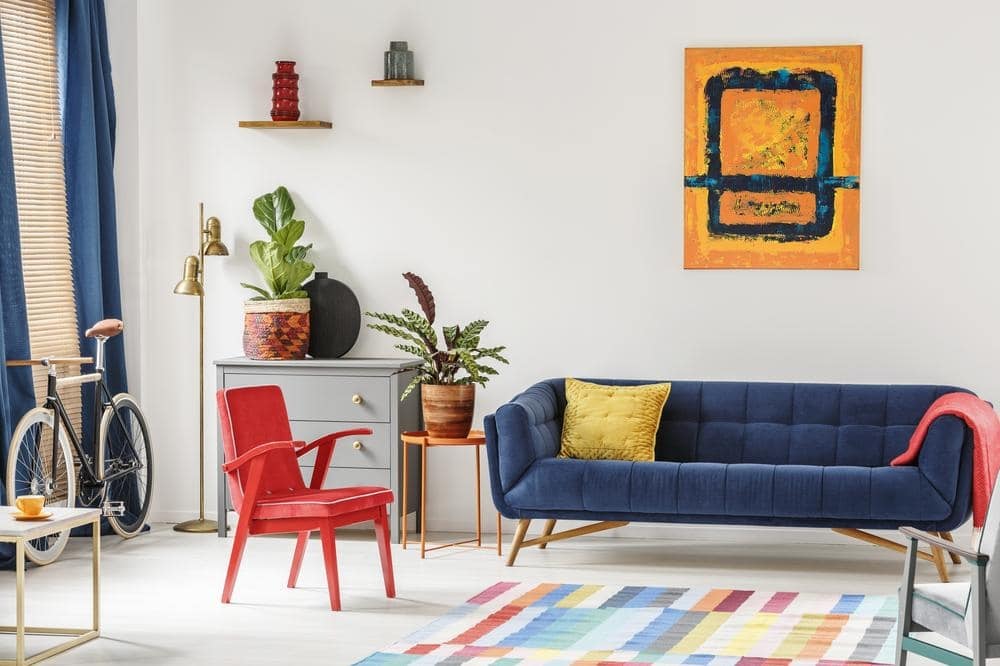
A conversation pit is a sunken seating area that creates a cozy and intimate seating arrangement. This layout is perfect for larger spaces and can be formed using a combination of sofas, lounge chairs, and ottomans. The sunken seating arrangement can also be surrounded by built-in bookcases, shelves, or a fireplace for added coziness.
L-shaped Sectional

For smaller spaces, L-shaped sectional sofas can add comfort and functionality to your living room. This layout works best when the L sectional’s longer part faces the television. You can use a rug to anchor the seating arrangement and add accent chairs or a coffee table for additional seating and functionality.
Dual sitting arrangements

You can create two distinct sitting areas in a large living room. One area can be used for watching TV and another for reading or relaxing. Sofas, chairs, and side tables can create two distinct seating areas. Adding an area rug and lighting to each area can give it a different feel.
Symmetrical Seating

Symmetrical seating arrangement creates a formal, classic look in your living room. This layout can be enhanced with matching armchairs and side tables. Two identical sofas facing each other with a coffee table in the center can create a balanced atmosphere.
Layered seating

Layered seating can add depth and dimension to a small space. You can use different furniture pieces that vary in height, for example, an armchair, a loveseat, or a sofa. Placing a console table behind the sofa can create a focal point and divide the space, adding functionality and depth.
Designing the perfect living room layout can improve your living space’s overall look and function. The key is understanding your needs, the size of the room, and your sense of style. These living room layout ideas help you create a comfortable, functional, and stylish living space that will reflect your style and personality.
Whether you choose a conversation pit, L-shaped sectional, dual sitting arrangements, symmetrical seating, or layered seating, the perfect layout will transform your living room into a cozy haven that everyone will enjoy.
Living Room Layout Ideas With Tv
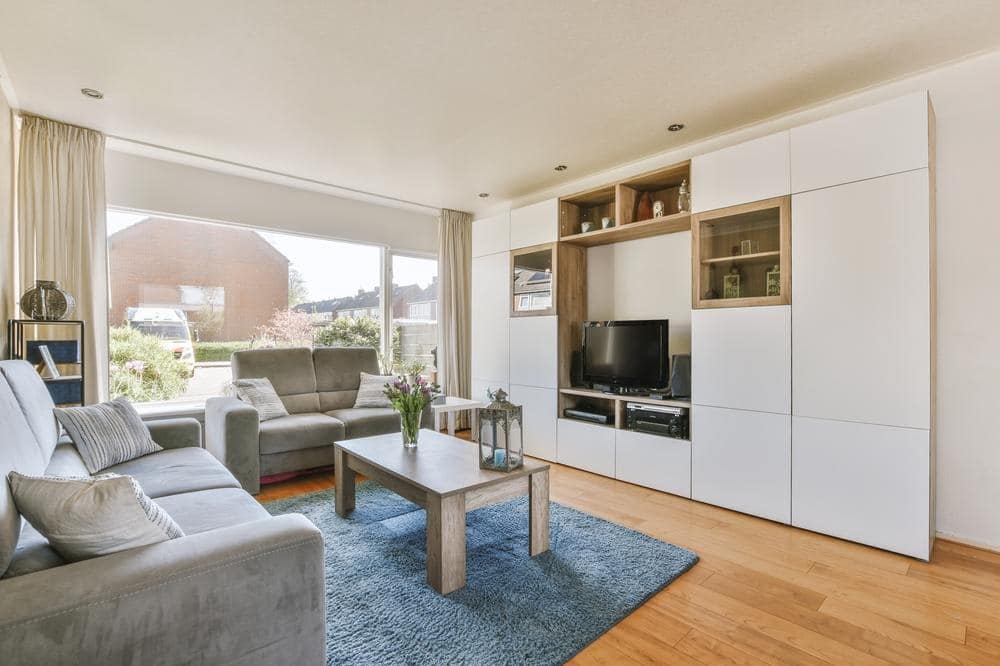
When designing the perfect living room, one of the most important considerations is where to place the TV. After all, it’s likely to be the centerpiece of your entertainment space. So why not make it stand out? One popular idea is to create a gallery wall behind the TV, showcasing art, photographs, and other items that reflect your personality.
Or, for a cleaner look, consider mounting the TV on a stylish console table or a classic fireplace mantel. Whatever your preference, the key is creating a comfortable and visually appealing space where you’ll want to spend time. You can transform your living room into the ultimate relaxation zone with creativity and planning.
Living Room Layout Ideas With Fireplace

There’s something about a fireplace that instantly creates a cozy and inviting atmosphere in any living space. Whether you have a large or small room, or a traditional or modern style, incorporating a fireplace into your living room can enhance its overall aesthetic and be the focal point of your space.
And when it comes to designing your living room layout around the fireplace, there are endless possibilities to consider. From arranging your furniture to incorporating accent pieces, there are countless ideas to make your living room layout with a fireplace functional and stylish.
Living Room Layout Ideas With Tv And Fireplace
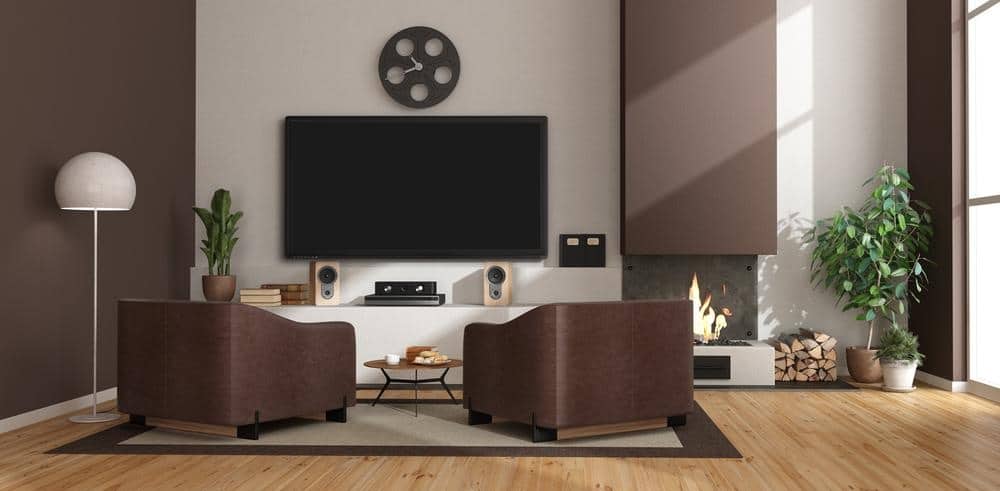
Your living room is the heart of your home, and it’s important to ensure it’s comfortable and aesthetically pleasing. One of the challenges when designing a living room is creating a functional layout that incorporates a TV and a fireplace. Fortunately, plenty of living room layout ideas can help you achieve this goal.
Consider placing the TV above the fireplace or positioning them side by side. Another popular option is to place the fireplace on one wall and the TV on the adjacent wall. Whatever layout you choose, don’t forget to add seating that encourages relaxation and conversation. With these living room layout ideas, you can create a cozy and stylish space.
Living Room Layout Ideas With Sectional

Designing your living room with a sectional can be a great way to create a cozy space for family and friends to gather. The possibilities for layout and decor are endless with this versatile piece of furniture. One idea is to opt for a symmetrical arrangement with the sectional as the centerpiece, flanked by matching armchairs and a complementary coffee table.
Alternatively, you could try a more informal setup by positioning the sectional diagonally across a corner and layering rugs to define the space. Whichever way you go, experimenting with different arrangements can give your living room a fresh and inviting feel.
Living Room Layout Ideas Apartment

Regarding living room layout ideas for an apartment, several options exist to maximize your space. One option is to create a conversation area with a tiny sectional or loveseat and a couple of chairs around a coffee table. Another idea is to place your furniture at an angle for a more dynamic and exciting look.
Consider using multifunctional furniture such as a storage ottoman or a console table with shelves for a small space. You can also create a cozy reading nook by placing a comfortable chair and a floor lamp in a corner. With some creativity, you can find the perfect living room layout that suits your style and needs in an apartment.
Living Room Layout Ideas Rectangular Room

When it comes to arranging furniture in a rectangular living room, you want to make sure to create a balanced space that maximizes the area. One idea is to divide the room into two sections, a TV area and a conversation area. This can be achieved by placing the television on the wall opposite the room’s entrance and arranging the seating area around it.
Then, place a sofa or a pair of chairs in the center of the room, facing each other to create an intimate conversation space. To add some dimension, add an area rug under the furniture groupings. Leave enough space to create easy foot traffic flow throughout the room. You can create a functional and stylish space with these living room layout ideas.
Living Room Layout Ideas With Corner Fireplace
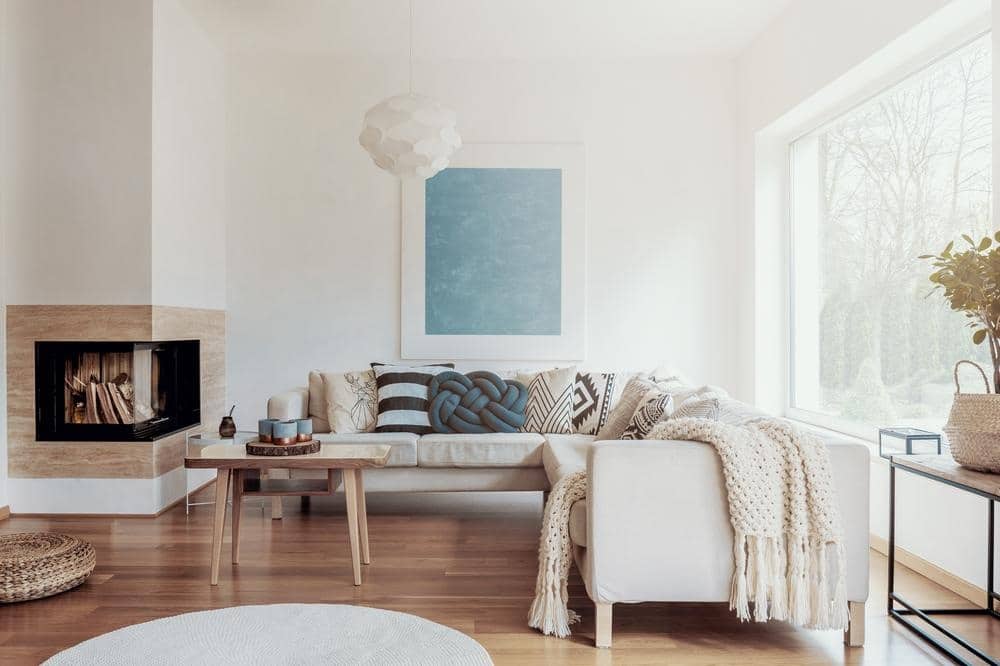
A living room with a corner fireplace can add character and warmth to your home. However, designing its layout can be tricky as you must maximize the space while ensuring the fireplace remains the focal point. One idea is to place the furniture at an angle, allowing you to create a cozy seating area while keeping the fireplace at the center.
Another option is placing the television on an opposite wall, providing an entertainment area while showcasing the fireplace. Whatever you choose, remember that the living room layout should reflect your style while providing comfort and functionality for you and your guests.
Living Room Layout Ideas Open Floor Plan

An open floor plan can offer endless possibilities when designing the perfect living room layout. This layout creates various zones within the same room while maintaining a cohesive and spacious look. One idea is to place the sofa and chairs in a comfortable cluster facing a fireplace or TV for a cozy and inviting vibe.
Another option is to divide the space into different areas, such as a dining section, a relaxation corner, or a game room, using rugs or furniture arrangements. The key is balancing functionality, comfort, and style while enjoying the room’s natural flow. So, whether you prefer a classic or a modern aesthetic, an open floor-plan living room can be the perfect canvas for your creativity and personal taste.
Living Room Layout Ideas Small
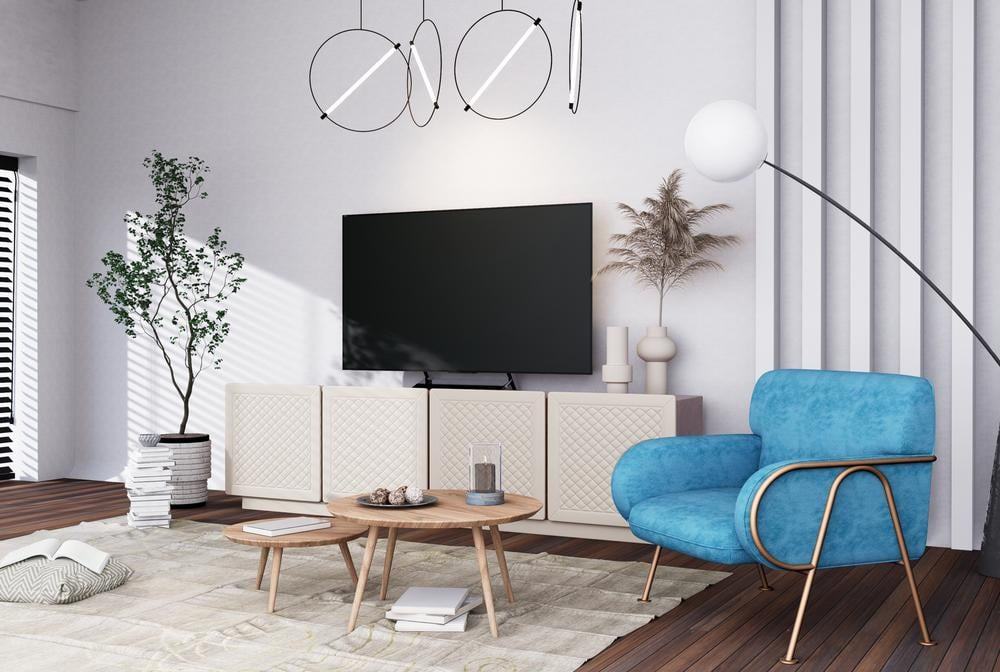
Designing the layout of a small living room can be a challenge, but there are plenty of ideas to help you make the most of your space. One option is to arrange your furniture against the walls to create a more open feel in the middle of the room. Another idea is to use multifunctional pieces, such as a storage ottoman or a hidden coffee table, to maximize seating and storage space.
You can also add visual interest with a statement rug or eye-catching wall art. With creativity and ingenuity, you can transform your small living room into a cozy, stylish space that meets all your needs.
Living Room Layout
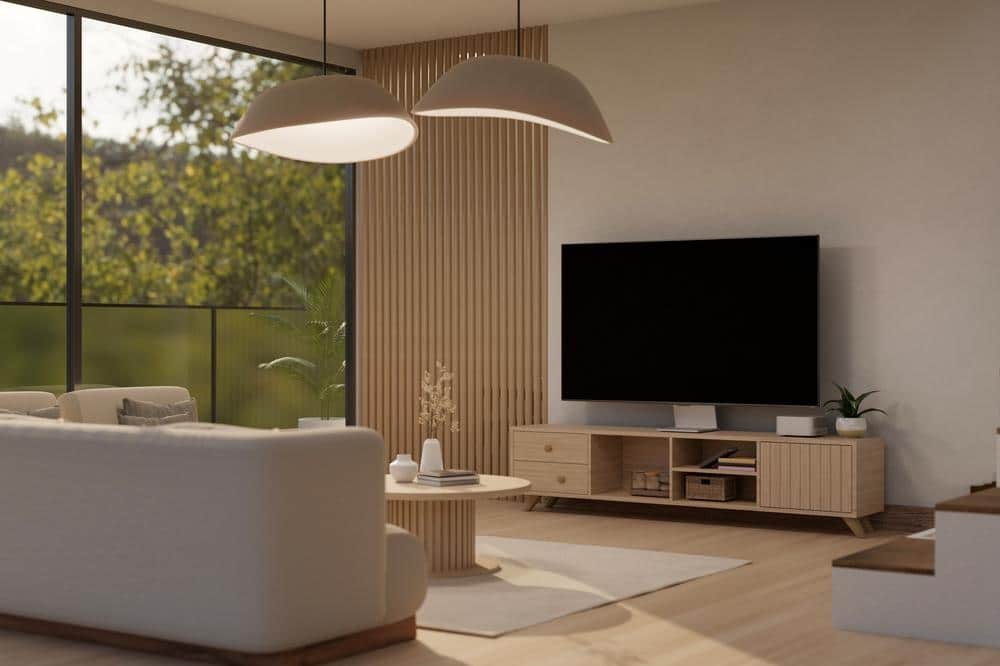
The living room layout is crucial in creating a warm and inviting space for family and guests. You can transform your living room into a comfortable oasis by carefully selecting furniture pieces, functionally arranging them, and incorporating unique decor elements. One approach for a successful layout is to create conversation areas that provide easy flow and movement throughout the space.
From cozy seating arrangements around a fireplace or TV to a quiet reading nook in the corner, a well-designed living room creates a welcoming atmosphere perfect for any occasion. Whether you prefer a classic or modern aesthetic, the key is to tailor the layout to fit your lifestyle and personal style. So experiment until you discover the perfect living room layout that works for you and your family.
Living Room Layout Ideas
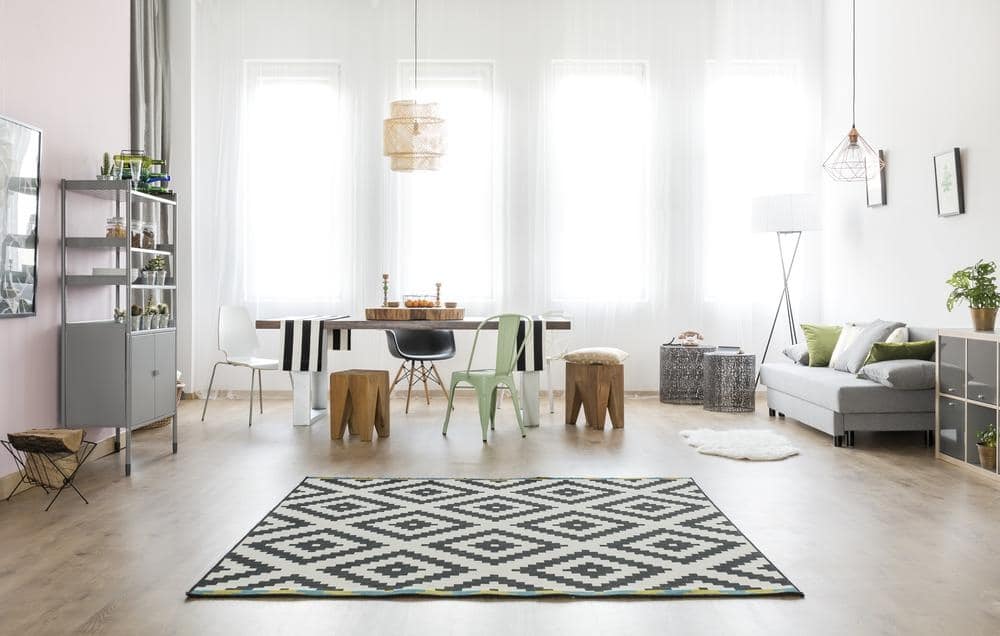
Creating the perfect living room layout can be a tricky task. Creating the perfect living room layout can be a tricky task. Furniture arrangement is key to creating an inviting, comfortable space that encourages conversation and relaxation. To create the ideal living room setup, consider how you plan to use the space and who will use it with you.
From there, you can begin arranging your furniture to maximize seating areas while providing easy foot traffic flow throughout the room. Whether you prefer a traditional or modern aesthetic, these living room layout ideas offer plenty of inspiration for designing a cozy and stylish haven in your home.
Living Room Setup

When creating a comfortable and welcoming living space, the right living room layout can make all the difference. Whether you have a small apartment or a spacious house, choosing the right furniture arrangement can help you maximize your space while maintaining a stylish look. From symmetrical layouts to asymmetrical ones, there are plenty of living room setups to choose from that can reflect your style and needs.
Living Room Set-Up Ideas
Maximizing your living room’s floor space is vital when arranging your furniture. Whether you’re short on square footage or simply looking to create a more open and inviting atmosphere, plenty of set-up ideas can help you achieve your vision. Consider opting for a minimalist approach, using fewer pieces of furniture and focusing on sleek and simple designs.
Alternatively, you can play with scale and proportions to create a bold, eye-catching look. No matter your preference, there are endless possibilities to create an inviting and functional living room that maximizes your floor space.
Living Room Arrangement Ideas
The living room is the center of any home, and it’s important to ensure that it’s arranged in a functional and aesthetically pleasing way. If you want living room ideas to update your current space, many options are available.
Some popular arrangements include arranging furniture around a focal point, such as a fireplace or TV, using rugs to define conversation areas, and incorporating plenty of lighting for ambiance. Also, mix and match furniture styles and textures for a unique and personalized look. No matter what living room arrangement you choose, the goal is to create a comfortable space, inviting and reflective of your personal style.
Living Room Setup Ideas
When it comes to living room setup ideas, floor space is essential. Proper furniture and decor arrangement can help you make the most out of your living area while creating a comfortable and inviting atmosphere. Whether you’re working with a small apartment or a large house, plenty of options can maximize your floor space without compromising on style.
From minimalist designs focusing on sleek lines and simple shapes to bold arrangements featuring eye-catching pieces, you can create the perfect living room layout for any occasion. You can design the ultimate gathering spot for family and friends with just a little creativity and inspiration.
Ideas For Room Layout
Maximizing floor space is important to make the most of small living rooms. By arranging furniture wisely and choosing well-coordinated decorations, even the tiniest areas can become attractive and comfortable places to hang out. From utilizing multifunctional furniture pieces to creating conversation areas with rugs and lighting, there are plenty of ideas for room layouts that can make the most out of limited square footage.
Living Room Layout Designs
Living room layout designs are essential for maximizing floor space and creating a comfortable atmosphere. Whether you’re dealing with a small apartment or a large house, plenty of creative solutions can help you make the most out of your living area. Room dividers provide an excellent way to divide space while adding style and character to any room.
From stylish bookcases and airy curtains to folding screens and sliding partitions, these versatile pieces can be used in various ways to create distinct areas within the same living space. With creativity, you can create the perfect layout for any occasion with just a few well-placed furniture pieces and decor items.
Living Room Configurations
Open-concept living rooms are becoming increasingly popular as they provide a great way to make the most out of limited space. These living room configurations combine multiple areas into one large, cohesive space that can be used for entertaining, relaxing, or working. With just a few well-placed furniture pieces and decorations, you can create an inviting atmosphere with plenty of floor space for activities and gatherings.
Open-concept living rooms also offer flexibility in style – from minimalistic designs focusing on sleek lines to bold arrangements featuring eye-catching pieces – there’s something for everyone. You can craft the ultimate gathering spot for family and friends with creativity and inspiration.
Best Living Room Layout
When it comes to the best living room layout, the key is in furniture arrangement. You can create a living room that shines by placing furniture to maximize space while creating a cohesive and inviting atmosphere. One of the best ways to achieve this is by defining conversation areas with rugs, coffee tables, and chairs facing each other. This creates a comfortable and intimate atmosphere for gatherings and discussions.
Additionally, incorporating plenty of lighting with floor, table, and overhead fixtures can help set the tone for any occasion, from a cozy night to a lively party. Mixing and matching furniture styles and textures can also add personality and character to the living room, making it feel uniquely yours. Overall, the best living room layout is comfortable, versatile, and reflective of your style.
Sitting Room Layout
Creating a small living room layout can be challenging, but with the right furniture and decor, creating an inviting atmosphere that maximizes space is possible. Sitting rooms offer flexibility in style – from minimalistic designs focusing on sleek lines to bold arrangements featuring eye-catching pieces – allowing you to craft a cozy gathering spot for family and friends.
Creativity can create the perfect sitting room layout by arranging furniture wisely and choosing well-coordinated decorations. Room dividers provide an excellent way to divide space while adding style and character to any room. Combining these elements with multifunctional furniture pieces such as ottomans or sectionals allows you to make the most of limited square footage while creating a comfortable place for conversations and gatherings.
How To Layout A Living Room
Layouting a living room requires careful planning, creativity, and an eye for detail. With strategic thinking and creative solutions, you can quickly craft the perfect layout for any occasion! One of the most important aspects is to ensure you are not overcrowding your space with furniture and that there is enough space between each piece.
This will give the illusion of a bigger area and create more comfortable pathways within the room. Creating distinct areas or zones can also bring order to your living space. Rugs, coffee tables, and chairs facing each other help define conversation areas while adding style and character to any room. Room dividers also provide an excellent way to divide space without sacrificing floor area or making it feel cluttered.
How Do I Space Out My Living Room?
Several key factors must be considered when spacing out your living room to create a functional and visually appealing environment. Here are some tips to help you space out your living room:
1. Determine the focal point: The first step is to determine the focal point of your living room. This could be a fireplace, a television, artwork, or even a large window. Once you have identified the focal point, arrange your furniture around it to create a cohesive and inviting space.
2. Consider traffic flow: Another important factor is traffic flow. Make sure that your furniture arrangement allows for easy movement through the space. You want to avoid weaving through furniture from one end of the room to the other.
3. Create conversation areas: If you enjoy entertaining, consider creating multiple areas in your living room. This can be achieved by grouping furniture to encourage conversation and socializing. For example, create a cozy seating area around a coffee table or armchairs.
4. Use rugs and lighting: Rugs and lighting can be great tools for spacing out your living room. An area rug can define a seating area and anchor furniture in place, while a well-placed lamp can create a cozy reading nook or highlight a piece of artwork.
5. Remember storage: Finally, remember storage. A cluttered living room can feel cramped and overwhelming. Invest in storage solutions such as bookcases, cabinets, or ottomans with hidden storage to keep your space organized and open.
Overall, spacing out your living room requires careful consideration of both function and design. With these tips, you can create a comfortable and visually appealing space that meets your needs and fits your style.
How Do I Set Up My Living Room Ideas?
Setting up your living room can be an exciting venture, and there are many different ways to approach the task. Here are some tips to help you create a functional and stylish living room that fits your style and needs.
1. Determine your goals and priorities: Before you start rearranging furniture or buying new items, it’s essential to figure out what you want to achieve with your living room. Are you looking to create a cozy space for family movie nights or a more formal sitting area for entertaining guests? Do you need storage solutions for books or toys? Once you have a clear idea of your priorities, making decisions about layout and decor will be easier.
2. Consider the layout: The layout of your living room will depend on the size and shape of the space, as well as your needs and preferences. Consider where to place the main seating area and any secondary seating or accent pieces like a coffee table or rug. You want to create a comfortable flow for easy movement and conversation.
3. Choose a color scheme: Your color scheme will set the tone for your living room. Consider the existing colors in the space, such as walls, flooring, and trim, and choose a palette that complements or contrasts with those hues. You can also use color to create a focal point or add visual interest with accent pieces like throw pillows or curtains.
How To Layout Living Room With Tv?
Setting up your living room can be daunting, especially when you need help figuring out where to start. Below are some tips to help you set up your living room ideas:
1. Determine the purpose of the room: The first step to setting up your living room is to determine the purpose of the room. Are you planning to use the living room to entertain guests, watch TV, or relax? Knowing the purpose of the room will help you determine the layout and the furniture you need.
2. Choose a focal point: The focal point of your living room should be the first thing that catches your eye when you walk into the room. It can be a fireplace, a piece of art, a window with a beautiful view, or a TV. Once you’ve chosen your focal point, arrange the furniture around it.
3. Determine the traffic flow: You want to ensure a clear path for people to walk through your living room. You don’t want to have furniture blocking the flow of traffic. Arrange the furniture in a way that allows people to move around the room quickly.
4. Choose the right furniture: The key to setting up your living room is to choose the right furniture. You want to choose furniture that is comfortable, functional and fits the style of your room. For example, consider a sectional sofa to maximize your space if you have a small living room.
5. Add lighting: Lighting is essential in any living room. You want to ensure your living room is well-lit, so add plenty of lighting fixtures such as floor lamps, table lamps, and overhead lighting.
6. Add accessories: Accessories such as rugs, throw pillows, and curtains can add color and texture to your living room. Choose accessories that complement the style and color scheme of your room.
Is There An App To Help Me Rearrange My Room?
Yes, there are several apps available that can help you rearrange your room. Here are a few popular options:
- MagicPlan: This app allows you to create a floor plan for your room by taking photos and measurements. You can then use the app to move furniture around and see how it will fit in the space.
- Home Design 3D: With this app, you can design your entire home, including your room. You can create a 3D model of your room, add furniture and decor, and experiment with different layouts.
- Room Planner: This app allows you to create a floor plan for your room and add furniture and decor to see how everything will look. You can also save and share different versions of your design with others.
These are just a few examples, but many more apps can help you rearrange your room. It’s a good idea to read reviews and compare features before choosing the one that’s right for you.
How Do You Design A Large Living Room Layout?
Designing a large living room layout can be intimidating, but with careful planning and thoughtful consideration, it can also be a fun and rewarding experience.
First and foremost, decide what your living room’s primary purpose will be. Will it serve primarily as an entertaining space for gatherings or as a place for family members to relax? Knowing the primary function of your living room will guide you when selecting furniture pieces.
Once you know the primary goal of the design, start by measuring out your space.
Taking accurate measurements ensures you’ll purchase furniture that works within your allotted space without overwhelming it or making it feel cluttered. You may want to add additional seating if more than four people are in your home or consider using sectional sofas, which provide plenty of seating but won’t take up excess floor space.
After selecting suitable pieces that suit your living area’s purpose and size, consider how they will complement existing décor elements already in place. Will they match overall color schemes or contrast them? Is there enough natural light coming in from the windows?
A great way to use natural light is by opting for transparent materials like glass-top tables which reflect light around rooms without sacrificing comfortability from heavier fabric varieties – thus giving them personality too! They can absorb noise levels over time while creating aesthetic shapes in any area! Choosing coordinating textiles like curtains is essential because fabrics have visually pleasing connotations on couches and walls.
Lastly, think about long-term solutions for possible rearrangements, including modular systems where different parts connect – allowing users complete control over their preferred layout quickly & easily! All these criteria form integral parts for designing a functional yet impressive-looking large living project that offers many years of enjoyment without feeling outdated after just a few months!
How To Design Living Room For Beginners?
Designing a living room for beginners can be a daunting task. Fortunately, there are a few simple steps that you can follow to ensure your living space looks great and functions well.
Start by taking measurements of the room and drawing up a floor plan, so you have an idea of the space’s flow, size, and shape.
Next, identify any existing focal points in your living room, such as fireplaces or windows; these should be kept at the center of focus when designing. Consider how much natural light is available in each area and where to place furniture accordingly; areas with more natural light should occupy lighter colors, while darker shades should fill shadowy spaces.
After deciding on color schemes, begin selecting furniture based on comfortability. Invest in quality pieces that will last longer than low-cost items. Remember: oversized chairs take up valuable real estate! Complete your design with decorations such as artwork, plants, or rugs that suit your lifestyle and aesthetic needs.
Organizing accessories like bookshelves, entertainment units, or side tables make keeping things neat while adding extra character to your living room design easy! Most importantly, enjoy creating something unique yet timelessly stylish that fits you like a glove… Good luck!
In Which Direction Should A Sofa Be Placed?
Consider a few essential points when figuring out where to put your TV in the living room.
First, consider what activities you would like to do in the living room besides watching TV. If you plan on entertaining guests or having conversations, it is best if the seating space is outside the television set, as this can be distracting.
Try to position your seating area away from the direct line of sight with the television so that whoever is sitting will not directly stare at a bright screen while engaging in conversation or other activities.
Second, consider how wide your viewing angle should be for optimum clarity and comfort when watching shows and movies on your TV. Generally speaking, a wider viewing angle is ideal if you have one person who wants to watch television from their spot. However, a smaller angle should suffice if multiple people plan on huddling around the TV together. Knowing this before determining where exactly you deploy your television set makes all the difference!
Where Should I Put My Tv In My Living Room?
The placement of your TV in your living room can significantly impact the viewing experience. First and foremost, you should consider the size and shape of your living room when making this decision. Ideally, if you have a larger space, positioning the television in the center of one wall creates an aesthetically pleasing look while allowing optimal viewing angles from any room.
If you are short on space or want to create cozy seating arrangements around the television, mount it higher on a wall at eye level or slightly above when seated. This allows viewers to see all corners of the screen best while still providing comfortable seating areas throughout your living room.
How To Efficiently Arrange Furniture In A Small Living Room?
To effectively arrange furniture in a small living room, it’s essential first to consider the purpose of the space and how you plan on using it. Generally speaking, you’ll want to create clear pathways for movement throughout the room.
Start by positioning your largest pieces of furniture, such as your couch and armchair, in a U-shape around a focal point like an entertainment center, fireplace, or a statement piece of art. Add end tables to hold lamps and other items on either side of this seating area. Add an accent table with drawers for extra storage if there’s enough space behind your sofa or chair.
Next, consider maximizing floor space by raising items that don’t need to be at ground level, like shelves or bookshelves on tall legs or wall-mounted pieces that can make a big difference if height is available near windows or elevations changes within the room. Also, place any ottomans away from walking paths so they don’t become tripping hazards while leaving the
How Can I Make My Living Room Look Expensive?
Making your living room look expensive can be tricky, but it is achievable with the right approach. Investing in quality furniture pieces and decorations can make a huge difference. Investing in timeless classics such as Chesterfield sofas and armchairs is ideal for giving an air of sophistication to any room; similarly, opting for statement coffee tables or bookshelves will give that expensive aesthetic.
Adding some luxury lighting options is another great way to draw attention to the living space and create a more luxurious atmosphere. Mirrors placed strategically around your living room will help reflect light and open up the area, making it feel more luxurious and bigger! A grand chandelier hung from the ceiling adds elegance, while wall sconces are also great options, especially if you prefer an understated style across the room.
How Do You Style A Simple Living Room?
Styling a living room doesn’t have to be expensive or complicated. Start by selecting a theme or overall style for the space and working from there as your canvas. If you don’t have a furniture set, find pieces that match styles and tones, such as mid-century modern minimalist, for a cohesive look.
From there, mix and match textures within this theme (like adding different pillows with various materials), and pay attention to small details like scented candles, wall art, or artwork accents.
For lighting, consider the activity likely to occur in that area – will it be great for entertaining? Choose dimmable light sources so you can adjust accordingly. Greenery is essential in giving any room life; incorporate plants into your design scheme, whether floor plants near seating areas or smaller potted options atop shelves/credenzas.
Finally, layer rugs over hardwood floors to define individual spaces while allowing your furniture to ‘float’ between them if needed. With mindful investment and creative thought, you can easily make a simple living room feel unique and special!
How Can I Design My Room Ideas?
Achieving a simple yet stylish living room doesn’t have to be a difficult task. To create an inviting space that radiates simplicity, consider the following tips:
1. Establish Your Color Palette: Choosing the right color palette for your living room can help create a more cohesive atmosphere and convey a specific mood or aesthetic. For example, neutral tones such as whites, creams, grays, and taupes often make spaces feel more relaxed and peaceful. Alternatively, you could use bolder colors if you prefer something with more energy.
2. Go Minimalist: When styling a room of any kind – particularly one with minimal furnishings– less is always best! Try keeping furniture pieces to only what’s essential such as sofas or chairs, coffee tables perhaps, but not much else; this encourages luxury in minimalism while giving space for airiness around the house which helps create calmness and relaxation the living area when desired.
3. Add Some Plants & Flowers: Plants are great additions for both functionality and aesthetic purposes – try adding leafy greens into your living room decor collection as they act like natural air purifiers while brightening up space aesthetically speaking with their vibrant hues! Fresh flowers (real or fake) also make wonderful centerpiece pieces – they instantly add life to an ordinary corner while sharing pleasant aromas throughout your home!
How Should The Furniture Be Arranged In A Living Room?
The layout of the furniture in your living room should be based on how frequently you have guests, how many people will be using the space, and what activities usually take place there. It’s all about creating a comfortable environment that ensures everyone has enough space to move around freely while keeping all the furniture usable.
Generally speaking, start by placing your largest pieces, such as sofas or loveseats, first. Place them in such a way that is visually appealing and inviting for conversation or other activities. End tables can then be placed near seating areas for easy access when entertaining guests or relaxing with family members.
To create an enjoyable atmosphere and draw attention to specific features of the room by adding accents like throw pillows, rugs, and lamps with ambiance lighting. Coffee tables in front of seating options are also great for snacks or drinks during conversations. Consider having ottomans that serve more than one purpose: they can act as extra seating if needed while also providing added convenience since they’re often easy to store away when not needed.
What Are The Living Room Layout Design Principles?
When designing the layout of any living room, there are several fundamental principles to keep in mind.
The first principle is to create a space that functions well based on how you use the room. Consider who will use the space, how formal or informal it needs to be, and what activities occur in that room. For instance, if your living room often hosts large family gatherings or game nights, plan for comfortable seating arrangements with ample floor space for additional furniture or activities as needed.
The second principle is to ensure adequate circulation within the space. Ensure there’s enough distance between furniture pieces so people can move freely without bumping into each other or getting stuck in a corner. Additionally, consider creating multiple conversation zones within one room by arranging chairs and couches into small U-shapes or clusters for more intimate conversations among groups of three or four rather than forcing everyone onto a single sofa together!
Thirdly, consider creating distinct focal points throughout the living room, such as an area rug over hardwood floors; paintings on walls; unique lighting fixtures; attractive coffee tables; statement art pieces; bookshelves filled with your favorite reads – anything that creates intrigue and conversation starters within the otherwise bland backdrop of regular décor items like couches and chairs. Lastly, incorporate natural elements like plants and greenery whenever possible to bring life into an otherwise lifeless environment!
How Do I Set Up A Perfect Living Room?
Creating the perfect living room is all about creating a space that reflects your personality and individual style while still being comfortable and inviting. Here are some tips to help you get started:
1. Determine Your Style: Consider the overall look and feel you want for your living room before buying furniture or decor. Consider colors, textures, materials, shapes, patterns – anything to create a complete design concept in your head. Once you have a clear vision of what kind of look you’re going for, it will be easier to find pieces fitting into that concept.
2. Measure: A good rule of thumb when arranging furniture is size and height, so make sure you measure carefully before making any purchases! Different elements at varying heights can help add depth to an area and ensure comfort by providing adequate space for movement between pieces when someone walks around the room.
3. Create Zones: Make sure there are distinct areas within your living room so that each person has a spot where they can relax or socialize comfortably with friends or family members (i.e., having one area dedicated solely towards watching TV while another is meant just for conversations).
What Is The Best Living Room Shape?
The most popular living room shapes are rectangular, square, or L-shaped. Each of these provides good design flexibility and ample seating for guests and family members alike.
Rectangular rooms are the most common option for many homes since they typically provide enough length for a sofa or sectional and plenty of additional seating opportunities (chairs, poufs, and accent tables).
Square rooms often feel more intimate than rectangular rooms but still work well if you want many furniture pieces included in your space — such as multiple chairs around an ottoman coffee table centerpiece — making them ideal choices if entertainment is frequently on the menu in your home.
Lastly, L-shaped rooms allow you to draw focus between two sides without feeling too cramped or overly large – this works especially well if one side features a fireplace mantle with built-ins nearby while another corner gives way to a reading nook filled with armchairs and natural light from nearby windows; they also make great solutions when larger families need plenty of seating without filling up an entire rectangular area all at once.
What Is The Best Way To Use Space In A Living Room?
When it comes to using space in a living room, the most important factor is how you optimize and arrange the furniture. Floor plans that effectively use available space start by selecting pieces that offer visual appeal and practicality.
You should also consider the placement of your furniture – keeping larger pieces away from high-traffic areas and ensuring they provide significant open pathways for easy movement throughout the room. Additionally, choosing pieces with multiple functions, like ottomans or sofas with built-in storage, helps create organized spaces without taking up too much floor area.
Suppose you want to maximize comfort while utilizing every inch of your living room. In that case, sectional seating can be an excellent choice as it allows people to comfortably sit together while efficiently occupying a corner or awkward area.
Alternatively, large area rugs are incredible for creating multiple “zones” within one open space; furniture can be arranged around these focal points allowing occupants to carve out their sense of privacy even amidst limited square footage.
Another trick for giving any living room more breathing space is incorporating vertical elements such as bookshelves, media units, or wall art – this will allow you to get creative with your decorating and draw attention away from crowded areas on the floor below.
A few strategically placed mirrors can brighten up darker areas of rooms or add depth simply when hung on interior walls without taking up extra surface area if done judiciously! With these tips in mind, tasteful design choices and thoughtful planning allow us to enjoy our cozy homes a little more!
How To Arrange A Living Room With A Fireplace And Tv?
Arranging a living room with a fireplace and television can be tricky, but it can be entirely doable if you follow some simple tips. First, you need to determine the most critical elements of the space – whether it’s the view of the outdoors or an inviting conversation area.
Once this is figured out, create balance in your space by grouping furniture around these elements.When laying out your furniture in relation to the fireplace and TV, start by placing your main seating piece (sofa or rocker) on either side of one element or in front of each one.
Ensure that any chairs are placed within easy reach for conversations and TV viewing. If possible, arrange your seating area so that it faces slightly towards another focal point in addition to the fireplace and TV—like toward a large window with lovely views or artwork hung at eye level. This will help bring cohesion into your overall look while creating an engaging spot for conversation and movie-watching nights!
For a cozy setup next to a fireplace, consider using ottomans or footstools, which can pull double duty when needed since they provide extra seating yet store away nicely when not required. Try using accent chairs near windowsills if there is enough natural light coming through—this way, guests may enjoy some relaxing time while admiring nature without being obstructed by bulky furniture.
How Can I Arrange My Sitting Room?
Arranging your sitting room is essential in creating a comfortable and inviting living space. Even if you have limited furniture, several easy ways exist to maximize the available space. Here’s how to arrange your sitting room:
Start With a Clear Layout: Before you move furniture around, you must know what kind of layout you’d like. Consider how much space you need for seating versus additional activities such as crafting or gaming, and plan accordingly. You can also use graph paper or online virtual room planners to create different layouts that fit your needs before rearranging furniture or buying new pieces.
Design Around Your Focal Point: Every good design should start with at least one good focal point–this could be anything from a piece of art to a plush rug in the middle of the room–so decide on one thing that will draw people’s attention when they enter the room and build from there! Use complementary colors and designs for all other items to ensure everything flows together well aesthetically without competing with each other too much for attention.
How Do You Zone A Large Sitting Room?
Zoning a large sitting room can be achieved by carefully placing furniture and decor. The first step is to decide what mood or atmosphere you want in the room. Do you want the conversation area for more relaxed gatherings, an office area for work, or a media corner for movie nights? Once you have decided, it will help determine how to best layout and zone your large sitting room.
For example, building a media corner would make sense to place your TV on a wall far away from windows or other natural light sources that could create glare while watching movies. Additionally, consider seating comfortably around the television, such as sectional sofas with reclining chairs or ottomans, which provide easy access when accessing remotes and gaming systems. Other accompaniments, like side tables for snacks and drinks, are often helpful when zoning these spaces.
If, instead, your preference was an office area, then having adequate workspace is key; desks with built-in storage coupled next to bookcases can be essential tools in creating efficient areas where productivity may flourish without distractions from larger family members during movie night! Additionally, adding smaller accessories such as lamps provides additional lighting to keep eye strain at bay throughout long work hours within this space.
Lastly, conversation areas are great places that allow visitors the most accessible access to one another’s company by centering pieces like armchairs and coffee tables rather than immediately against walls; this allows extra entryways where individuals don’t have to climb over couches or any other objects when conversing with each other!
Although zoning can appear complicated at first glance – all it takes is some time spent understanding both furniture placement according to intent and smaller accents that bring much-needed comfort – after which enjoying all these different zones will come quickly!
How To Place A Sofa In A Living Room?
Placing a sofa in a living room is essential to any space. It’s the centerpiece of the room and sets the tone for all other furniture and décor you add to the room.
When deciding how to place your sofa in your living room, there are a few basic steps that you can follow.
1. Start with a plan: Before placing any furniture in the room, create a plan based on your preferences for layout and traffic flow within the space. Consider what activities will be taking place in this area and how much natural lighting is available in different parts of the room. This will help guide you when selecting where to put your sofa and furniture around it.
2. Choose an appropriate size: Measure out an area on your floor so you know exactly what size or shape couch would fit into that area best; this way, when shopping for couches, you’ll know exactly what kind of dimensions work best with its surroundings.
3. Focal Point: Wherever possible, try to position the seating piece directly opposite from some type of iconic feature such as fireplaces; this creates visual appeal not only by allowing everyone easy access to admire these elements but also because it helps pull things together visually creating balance throughout by drawing attention towards more minor details like rugs or artwork hung above mantels, etc…
4. Allow Space For Pathways: Make sure that pathways have enough clearance around them so people can move freely without having to navigate around any obstructions (at least 12-18 inches).
5. Comfort Is Key: Choose comfortable cushions – make sure they’re made from suitable quality materials so they don’t sag after minimal use, and if they do come equipped with throw pillows, then ensure they won’t be too bulky; otherwise, all those items may end up blocking views through windows or blocking TV screens hung above mantlepieces, etc.
6. Final Touches & Accessories: Once everything is placed, layer spaces with accessories such as bookshelves, side tables, lamps, artwork decors, mirrors, rugs, plants, etc……… There should be something desired between each item & empty spaces filled appropriately but not overcrowded either … Be mindful – symmetry works well while small changes here & there bring subtle touches that provide personality or pizzazz depending upon tastes!
What Are The Components Of A Sitting Room?
A sitting room, also known as a living room, is one of the most essential rooms in any home. The furniture and decor you choose for this space set the tone and establish the ambiance of your entire house. It’s also where family members can gather and socialize or relax during their leisure time.
When designing a sitting room, there are several components to consider. Seating is perhaps the most crucial element of your design layout since it determines who can sit comfortably in your space without overcrowding.
A couch or two comfortable chairs provide plenty of seating for a smaller space. At the same time, large homes may require more seating options like sectionals or additional chairs/ottomans/chaise lounges around tables that include lamps to create task-lighting areas for activities like reading and writing.
Pairing these items with an appropriate entertainment center allows you to display electronics such as TVs, video game consoles, and speakers for all media enjoyment. Adjacent tables work well next to couches to store remotes and other accessories, including plants that add life into any space when placed thoughtfully next to windows or within nooks carved out by bookcases filled with interesting reads that invite visitors further into the heart of your home.
Rugs are another flexible item that offers much-needed texture while helping define areas in larger spaces; they’re also warm against bare feet! Don’t forget window treatments, too—this help keep things private from prying eyes outside but still allow natural light into your living area, creating a sense of warmth throughout all times day when used correctly with heavier drapes on cool winter days inviting comfort inside as soon as guests walk through the door!
How To Arrange Living Room With Tv?
Arranging a living room with a TV is essential in creating the perfect space for your family and friends to enjoy. It requires careful planning since it’s where you will gather most of the time. Here are some tips when arranging your living room with a television:
1) Choose the Right Location: One of the first things you should consider when setting up your living room is where to place your TV. Ideally, it should be placed in an area far away from windows so that outside light doesn’t interfere with viewing yet close enough to a central seating area providing excellent sightlines.
Consider furniture placement as well; if couches are placed around walls or doors, they can block views of larger televisions and make them harder to watch—so try angling lower-profile furniture towards the center of the room instead!
2) Wall Mounting vs. Stand Placement: With modern televisions being incredibly slim and lightweight, mounting them on walls has become increasingly popular over recent years. This helps open up floor space and gives you more design freedom than traditional stand placements allow—just make sure you measure any wall space accordingly before drilling any holes into it!
Alternatively, suppose wall mounting isn’t for you. In that case, numerous stands are available with shelves for extra storage or even caster wheels if you ever decide to move things around later on!
3) Consider Room Size & Ambient Lighting: The size of your living room can also affect how well sound travels across it – smaller rooms may require additional speakers. In contrast, larger ones might benefit from acoustic treatments like carpets/rugs or window treatments to help absorb specific frequencies and deaden echoing sounds (you want voices coming through loud & clear, after all!)
Additionally, think about ambient lighting too – have you recessed spotlights by chance? If so, this can help create exciting areas throughout otherwise poorly lit rooms. Whatever approach You take, just remember not to rely solely on overhead lighting, as this tends To be overly harsh & can contribute To glares during nighttime viewing hours too!
Is it OK to put a mirror in a closet?
Yes, it is generally okay to put a mirror in a closet. Mirrors can add depth and light to your closet space, making it appear larger and more inviting. However, from a Feng Shui perspective, some believe that mirrors in the bedroom, including those in closets, may disrupt the energy flow in the room. If you subscribe to these beliefs, consider placing the mirror to the left or right of the bed or ensuring it’s covered when not in use.
Are mirrored closet doors a good idea?
Mirrored closet doors can be a great addition to a room, especially in smaller spaces. They reflect light, which can make a room appear larger and brighter. Moreover, they provide a full-length view, which can be beneficial when getting dressed. However, some people find that mirrored doors look a bit outdated, and they might not align with every design style. Also, from a Feng Shui standpoint, mirrors that reflect the bed are considered disruptive to the energy flow.
Is it OK to put a mirror in a closet?
Putting a mirror in a closet is generally fine and can even be practical, offering a convenient place to check your outfit before leaving the room. However, if you follow Feng Shui principles, you might want to be mindful about where you place it. A mirror reflecting the bed is thought to disrupt energy flow. If this is a concern, you could place the mirror inside the closet door or ensure it’s covered when not in use.

Experienced Executive Assistant with a demonstrated history of working within the furniture industry. Skilled in furniture styling, visual communication, project management, and proficiency with Adobe Creative Suite. Strong arts and design professional with a (BA) Creative Direction for furniture design focused on Industrial Design from School of the Art Institute of Chicago.








